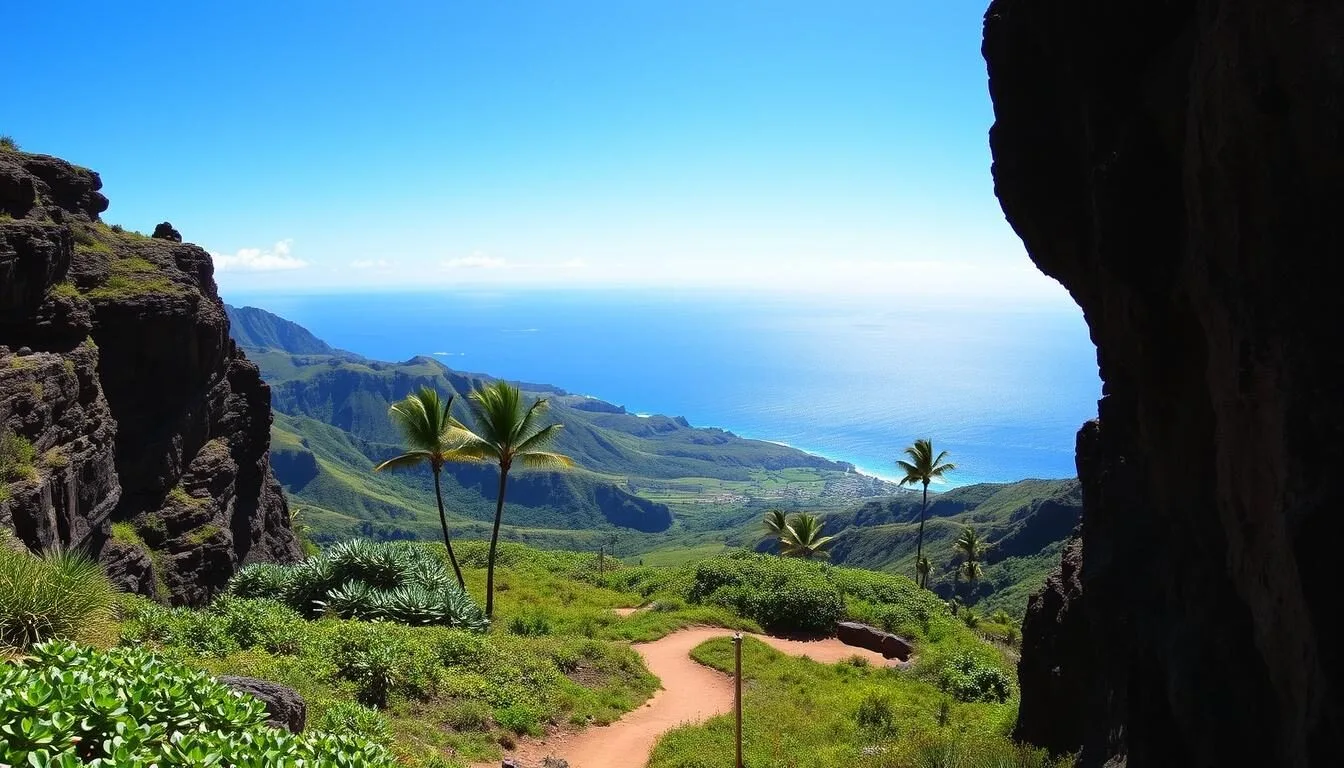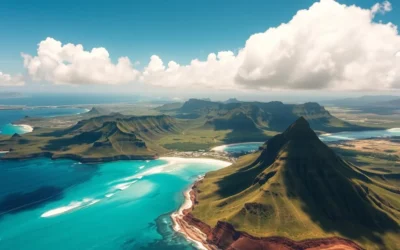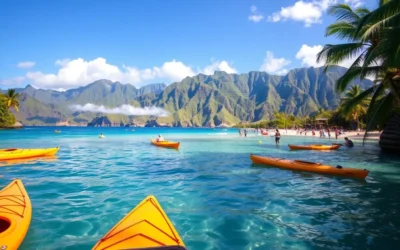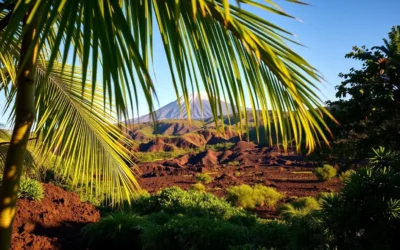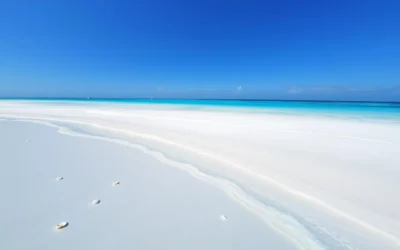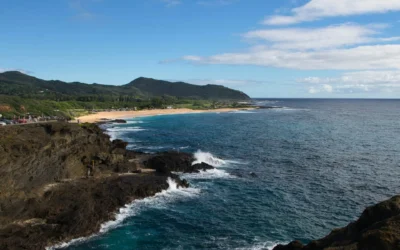✓ Accommodations ✓ Flights ✓ Rental Cars ✓ Tours & Activities
Imagine standing on a cliff, gazing out at a breathtaking view of a historic peninsula where thousands of Hawaiian people were once banished due to leprosy. This is the experience that awaits you at Pālāʻau State Park on the island of Molokai, Hawaii.
This 233.7-acre park is a treasure trove of natural beauty, cultural significance, and stunning vistas. As you explore the park’s diverse attractions, you’ll discover hiking trails, unique cultural sites, and serene picnic spots, all set amidst a backdrop of dense forests and rugged landscapes.
Your visit to this special park will provide a deeper understanding of Molokai’s complex history, particularly its connection to the historic Kalaupapa Peninsula. With its perfect blend of natural and cultural attractions, Pālāʻau State Park is a must-visit destination for travelers seeking an authentic Hawaiian experience.
Discovering Pālāʻau State Park
As you explore Pālāʻau State Park, you’ll uncover the rich history and spiritual importance of this Hawaiian site. The park is nestled on the island of Molokai, offering a unique blend of cultural heritage and breathtaking natural beauty.
Park Overview and Location
Pālāʻau State Park is located on Molokai, Hawaii, and is known for its sweeping views of the coastal area and historical significance. The park is situated near the Kalaupapa Peninsula, a site with a complex and somber history.
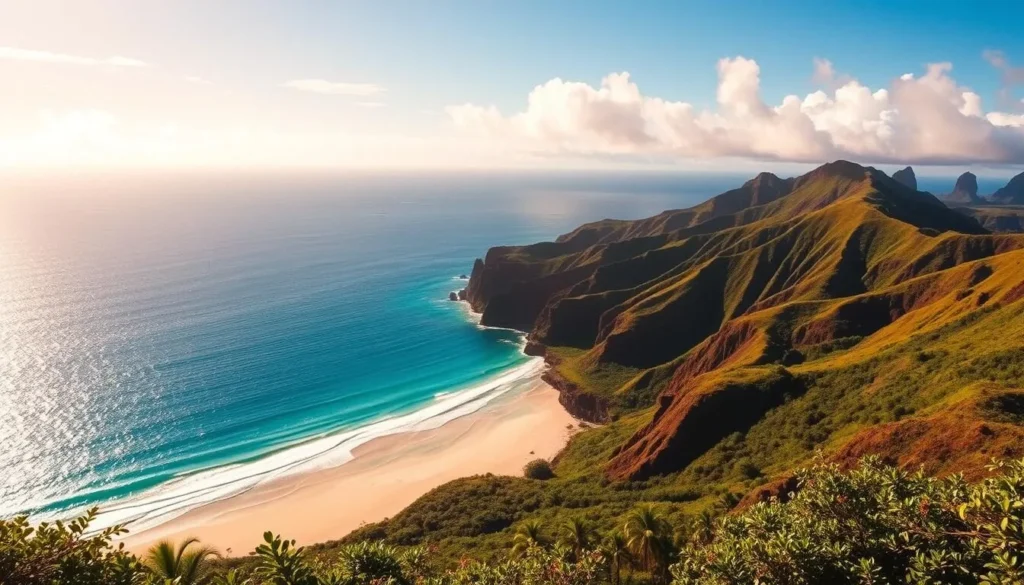
Historical Significance
The park holds deep historical significance as a sacred site for ancient Hawaiians and as a vantage point overlooking the Kalaupapa Peninsula. You can learn about the history of the leper colony established by King Kamehameha V in the 1800s, which created a segregated community for thousands of Hawaiian people diagnosed with leprosy. Historical markers throughout the park provide context about both ancient Hawaiian practices and the more recent history of the leprosy settlement below.
Main Attractions at Pālāʻau State Park
As you explore Pālāʻau State Park, you’ll discover a wealth of attractions that showcase the island’s rich history and stunning landscapes. The park is home to several significant sites, including the Kalaupapa Lookout and Ka Ule o Nanahoa, also known as the Phallic Rock.
Kalaupapa Lookout
The Kalaupapa Lookout offers breathtaking views of the Kalaupapa Peninsula, a historic site that was once home to a leper colony. From this vantage point, you can see the remains of the colony and gain a deeper understanding of the island’s complex history.

Ka Ule o Nanahoa (Phallic Rock)
Ka Ule o Nanahoa, or the Phallic Rock, is a unique five-foot-tall natural stone formation that has served as a fertility site for centuries. The hike to this sacred spot is relatively short, taking around 10-15 minutes to complete.
- The Phallic Rock is surrounded by a dense grove of old-growth ironwood trees, creating a serene and natural atmosphere.
- Visitors can learn about the legend of Nanahoa, who turned to stone after a dispute with his wife, through informational plaques near the formation.
- This site remains culturally significant, with women still leaving offerings like flower leis at the base of the rock.
| Attraction | Description | Hike Duration |
|---|---|---|
| Kalaupapa Lookout | Breathtaking views of the Kalaupapa Peninsula | N/A |
| Ka Ule o Nanahoa (Phallic Rock) | Unique five-foot-tall natural stone formation | 10-15 minutes |
Trails and Natural Features
As you explore Pālāʻau State Park, you’ll discover its diverse trails and natural features. The park offers a unique blend of scenic views and interesting geological formations.
Ironwood Grove
At the end of the parking lot, you’ll have the choice to turn left to Ka Ule o Nanahoa or right to the Kalaupapa Lookout. The area is surrounded by an Ironwood Grove, adding to the park’s natural beauty.
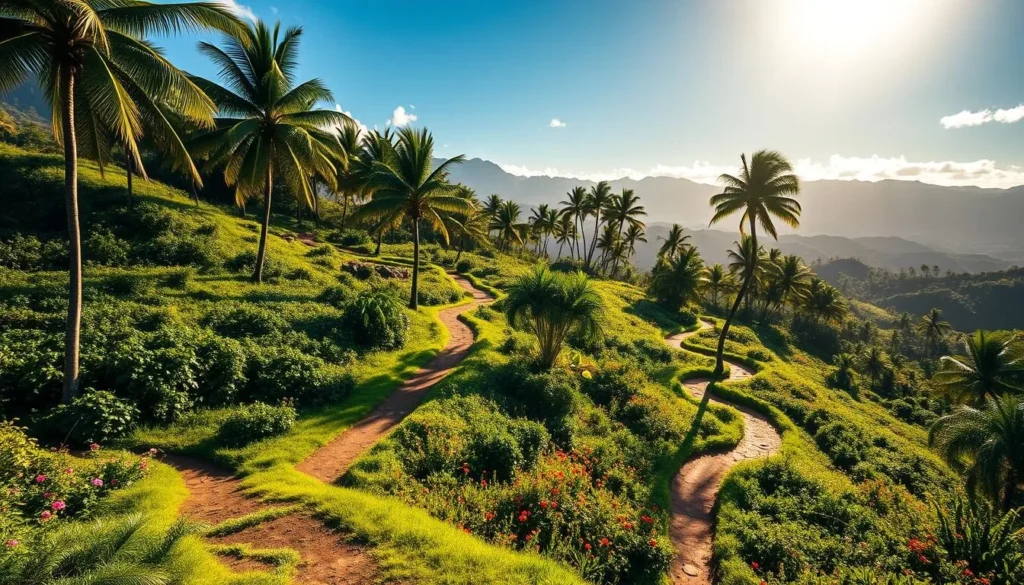
Hiking Options
You have access to two primary hiking options from the main lot. The walk to Kalaupapa Lookout is shorter and paved, while the path to Ka Ule o Nanahoa is more rugged and unpaved. For a more adventurous experience, the unpaved trail to Ka Ule o Nanahoa presents a slightly more challenging route.
- The paved path to Kalaupapa Lookout is suitable for most visitors and offers stunning coastal views.
- The unpaved trail to Ka Ule o Nanahoa is recommended for those with proper footwear due to its uneven and potentially slippery surface.
Practical Visitor Information
As you plan your visit to Pālāʻau State Park, it’s essential to know the practical details that will make your trip enjoyable. Understanding how to get to the park and what facilities are available will help you prepare for a memorable experience.
Getting to Pālāʻau State Park
To get to Pālāʻau State Park, you’ll need to head to the northern part of Molokai, Hawaii. The park is accessible via a scenic drive that offers stunning views of the surrounding landscape. Be sure to bring a map or download the necessary directions before your visit, as cell phone reception can be limited in some areas.
Facilities and Amenities
The park offers basic facilities, including clean restrooms located near the main picnic pavilion. You’ll find several picnic areas throughout the park, with a larger covered pavilion providing shelter from the sun or rain. Note that drinking water is not available on site, so it’s wise to bring your own supply. The facilities are well-maintained but rustic, aligning with the park’s natural setting.
| Facility | Description | Availability |
|---|---|---|
| Restrooms | Clean and well-maintained | Yes |
| Picnic Areas | Several areas, including a covered pavilion | Yes |
| Drinking Water | Not available on site | No |
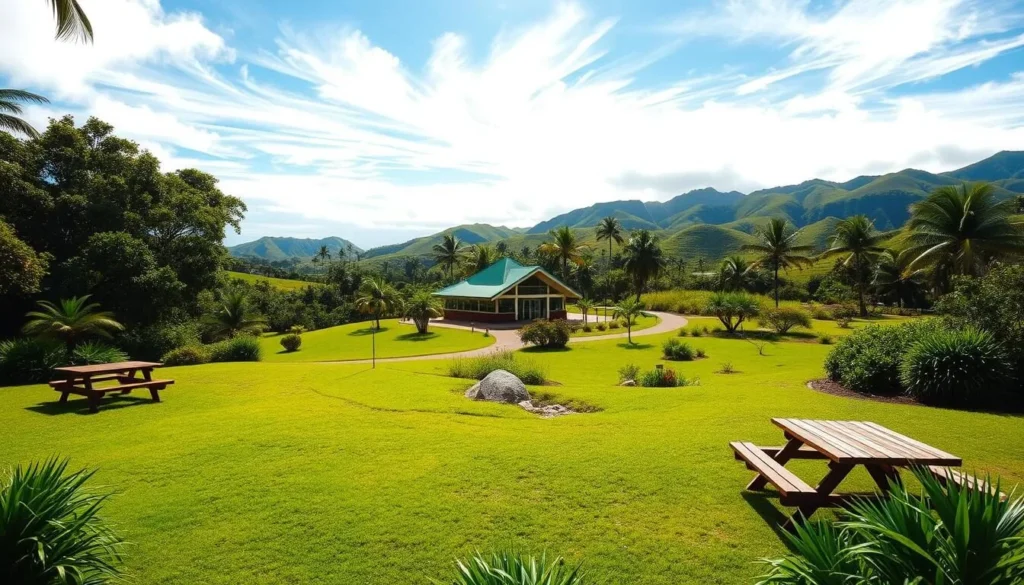
Camping at Pālāʻau State Park
If you’re looking for a unique camping experience, Pālāʻau State Park is the place to be. The park offers a serene camping experience amidst its natural beauty.
Camping Permits and Fees
To camp at Pālāʻau State Park, you’ll need to obtain a camping permit. The permit system helps manage the number of campers and ensures a safe and enjoyable experience for all visitors. Fees are associated with the permit, and these help maintain the park’s facilities.
What to Expect When Camping
Camping at Pālāʻau State Park is a rustic experience. You’ll need to hike in with your gear from the parking lot, as vehicles are not allowed in the camping area. Due to the park’s higher elevation, temperatures can be significantly cooler than in other parts of Molokai, so pack accordingly. The campground lacks electricity, running water, and shower facilities, but restrooms are available near the main picnic area. The lack of light pollution makes for spectacular stargazing opportunities at night. 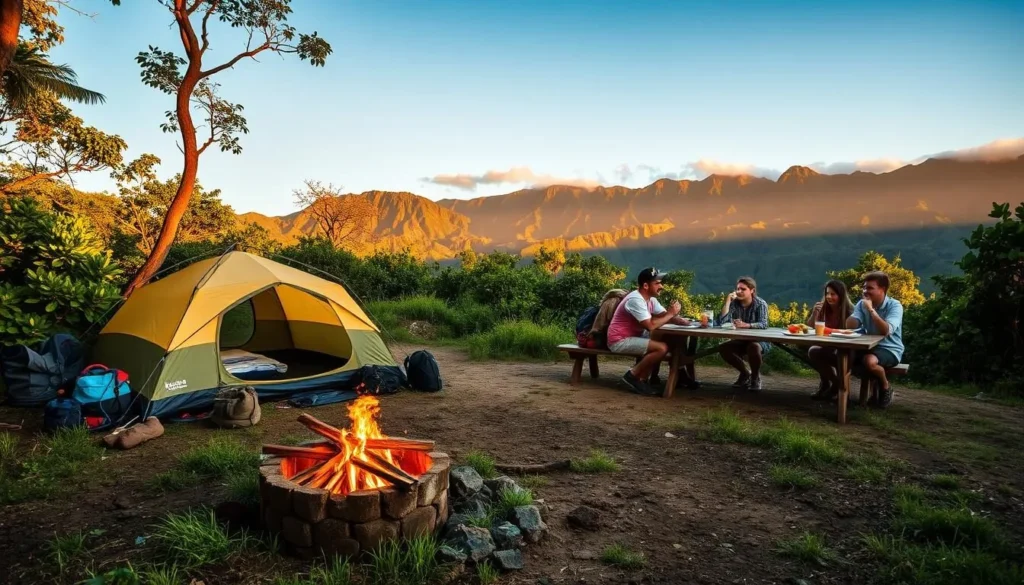
Where to Stay Near Pālāʻau State Park, Molokai, Hawaii
Molokai’s charm lies in its unspoiled nature, and your stay near Pālāʻau State Park should reflect that. The island offers a range of accommodations that allow you to experience its unique character.

Accommodation Options in Kaunakakai
In Kaunakakai, you can find small oceanfront hotels and vacation rentals that provide a more intimate experience. These options allow you to enjoy the local culture and relax on the beach.
Unique Stays on Molokai
For a truly unique experience, consider staying at Pu’u O Hoku Ranch, a family-owned biodynamic farm on the eastern end of Molokai. The ranch offers a rustic retreat center surrounded by 14,000 acres of protected land, with accommodations in the main lodge or private cottages. This setting is perfect for a digital detox during your island vacation.
- Experience Molokai’s agricultural heritage at Pu’u O Hoku Ranch.
- Enjoy farm-to-table meals and cultural demonstrations.
- Take guided nature walks on private property.
Essential Tips for Visitors
To experience the best of Molokai, visit Pālāʻau State Park, where you can enjoy stunning vistas, hike through ironwood groves, and explore historical sites. Be prepared for cooler temperatures due to the park’s higher elevation. Plan your visit to Kalaupapa Lookout early in the morning for the best views.
Remember to bring necessary supplies, including drinking water and snacks, as there are no concessions within the park. Be respectful of sacred sites like Ka Ule o Nanahoa (Phallic Rock). Consider combining your visit with other nearby attractions like Kalaupapa National Historical Park to maximize your time on Molokai.
The above is subject to change.
Check back often to TRAVEL.COM for the latest travel tips and deals.
